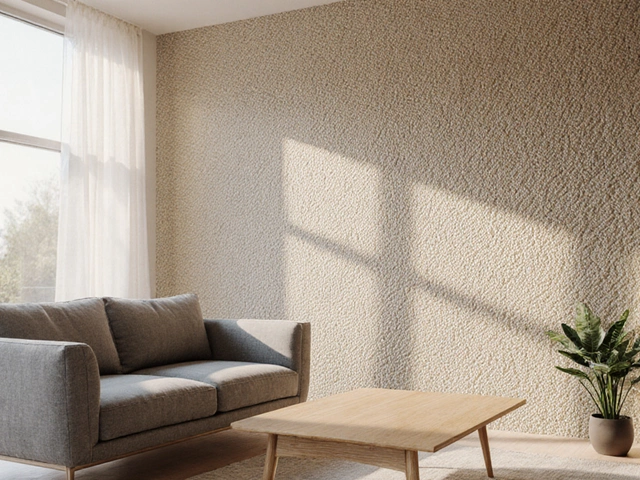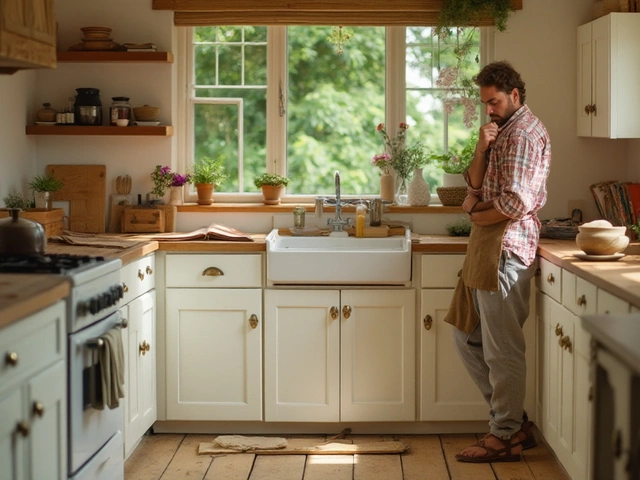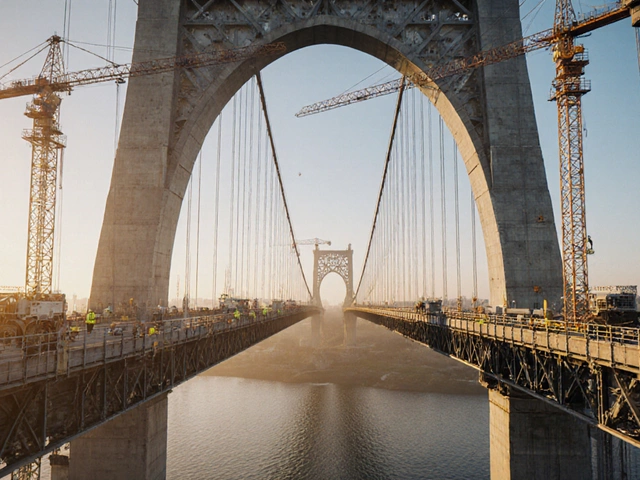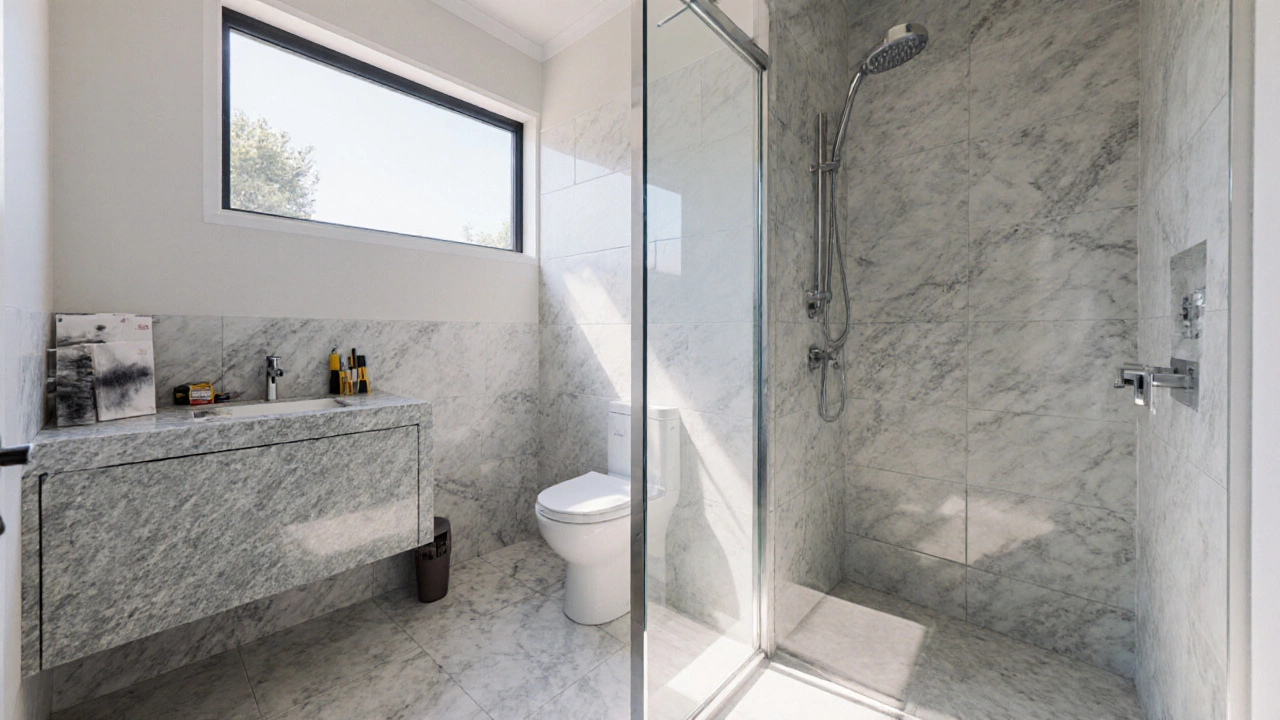
Can you really renovate a bathroom for $10,000? The short answer is yes-but only if you know where to cut corners and where to spend wisely. In Auckland, where labor costs are rising and tile prices have climbed 18% since 2023, hitting that $10k target takes strategy, not luck. This isn’t about buying the cheapest fixtures or skipping permits. It’s about making smart trade-offs so your bathroom looks modern, feels luxurious, and doesn’t drain your savings.
What $10,000 Actually Buys in a Bathroom Renovation
Most people think $10,000 means a full gut job with premium finishes. Reality check: that budget covers a solid mid-range remodel, not a luxury spa. Let’s break it down based on real job quotes from Auckland contractors in early 2025.
- Demolition and disposal: $800-$1,200 (includes removing old tiles, tub, vanity, and hauling away debris)
- Plumbing and electrical rough-ins: $1,500-$2,000 (moving fixtures, adding outlets, updating water lines)
- Walls and flooring: $2,000-$2,800 (waterproofing, cement board, medium-grade porcelain tiles, adhesive, grout)
- Vanity and sink: $800-$1,500 (prefab unit with quartz top, not custom cabinetry)
- Toilet and shower: $1,200-$1,800 (standard dual-flush toilet, prefabricated shower base with tiled walls)
- Lighting and ventilation: $500-$700 (LED mirror lights, exhaust fan with timer)
- Fixtures and hardware: $600-$900 (showerhead, faucet, towel bars, toilet paper holder)
- Contingency (10%): $1,000 (always include this-unexpected issues always pop up)
That adds up to roughly $9,200-$11,900. So yes, $10,000 is possible-but only if you stay on the lower end of each category. Go over on tiles? You’ll have to skip the heated floor. Splurge on a freestanding tub? You’ll need to use a basic vanity.
Where to Save Without Sacrificing Quality
You don’t need to buy the most expensive brand to get good results. Here’s what works in real life:
- Stick with standard sizes: Custom vanities or shower enclosures add $2,000+ easily. A 600mm wide vanity and a 900mm x 900mm shower base are cheaper, easier to install, and widely available.
- Use porcelain tiles instead of natural stone: Porcelain looks like marble or slate but costs half as much and doesn’t need sealing. Brands like Marazzi and Kajaria have great options under $60/m².
- Buy fixtures online: A $1,200 branded faucet from a local showroom is the same as a $400 one from TradeMe or Amazon if it’s from the same manufacturer. Look for models labeled “contractor grade” or “commercial use.”
- Reuse what you can: If your plumbing pipes are in good shape, don’t replace them. If your subfloor is solid, keep it. Demolition is the most expensive part-minimize it.
- Do the demolition yourself: If you’re handy, rent a jackhammer for $80/day and tear out the old stuff. It’s messy and hard, but you’ll save $1,000+.
One client in Mt. Albert saved $2,300 by keeping their existing bathtub and just resurfacing it with a professional epoxy coating. It looked brand new and lasted five years without issues.
Where You Shouldn’t Cut Corners
Some things aren’t worth risking. Skimp here, and you’ll pay more later.
- Waterproofing: This isn’t a place to buy cheap membrane. Use a reputable brand like Schluter or Davco. A failed waterproofing job can rot your floor, damage your neighbor’s ceiling, and cost $15,000 to fix.
- Exhaust fan: A weak fan means mold. Install one with a humidity sensor and timer. It costs $200 extra now but saves you from replacing moldy drywall later.
- Plumbing connections: Never DIY your main water lines or drain vents. A bad joint can leak for months before you notice. Hire a licensed plumber-even if it’s just for the critical connections.
- Lighting placement: Poor lighting makes a small bathroom feel cramped. Install at least two sources: overhead and vanity lighting. LED strips under the mirror are a cheap upgrade that adds serious luxury.
In a recent renovation in Ponsonby, homeowners saved $1,500 by skipping the heated floor and used a simple towel warmer instead. It looked just as nice and used less power. That’s the kind of smart trade-off that works.
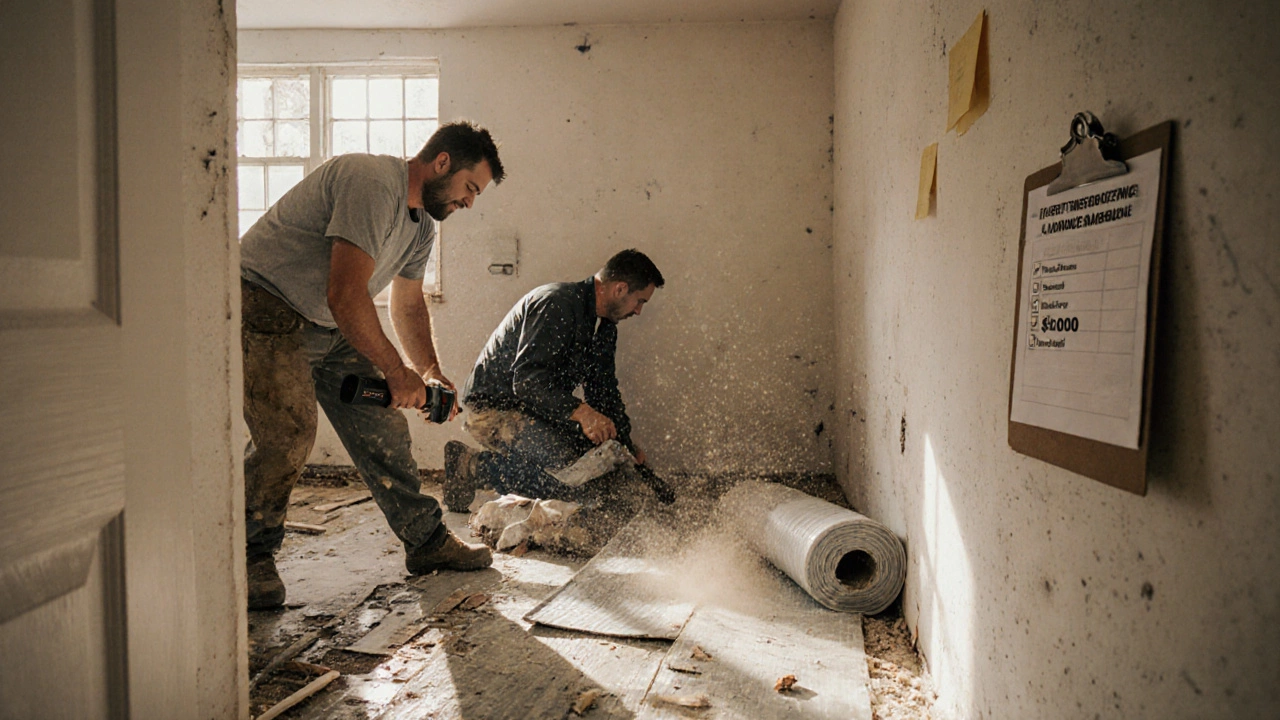
DIY vs. Hiring Help
Can you do it all yourself? Maybe. But here’s what most people underestimate:
- Time: A full bathroom renovation takes 4-6 weeks if you’re working nights and weekends. That’s 80-120 hours of labor. Are you ready for that?
- Permits: In Auckland, any plumbing or electrical work requires a building consent. Doing it without one can void your insurance and cause problems when you sell.
- Tools: You’ll need a tile cutter, wet saw, pipe wrenches, and a moisture meter. Buying or renting these adds up fast.
Most successful $10k projects split the work: homeowners handle demo, painting, and cleanup, while pros handle plumbing, electrical, and tiling. That keeps labor costs down without risking safety or compliance.
Real Example: A $9,800 Bathroom in Ellerslie
Last year, a couple in Ellerslie renovated their 5m² bathroom with this exact budget:
- Demolition: $900 (did it themselves)
- Plumbing/electrical: $1,600 (licensed trades)
- Waterproofing and tiles: $2,100 (porcelain tiles from China, installed by a local tiler)
- Vanity: $1,100 (off-the-shelf unit with quartz top)
- Shower base and door: $1,000 (pre-fab acrylic base, sliding glass door)
- Toilet: $450 (dual-flush, wall-mounted)
- Lighting and fan: $550
- Faucets and hardware: $700
- Contingency: $1,000
The result? A clean, modern bathroom with no visible budget cuts. The only compromise? No bathtub-they installed a large, walk-in shower instead. Their kids love it. Their friends think they spent twice as much.
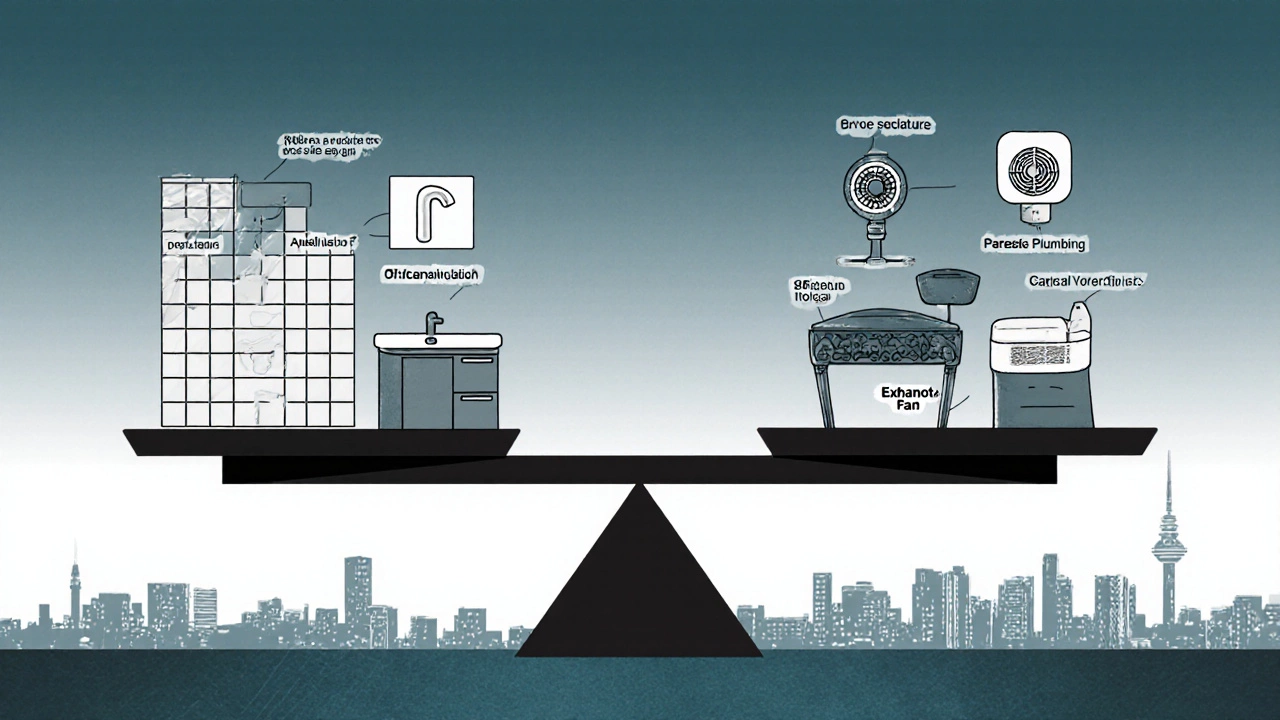
What Doesn’t Work
Here’s what happens when people try to stretch $10,000 too far:
- Buying cheap tiles that chip or stain after six months
- Skipping waterproofing because “it looks fine”
- Installing a $3,000 vanity that doesn’t fit the space
- Trying to install a steam shower with no ventilation
- Using unlicensed contractors who vanish after a deposit
One Auckland family spent $12,000 on a “budget” bathroom that leaked after three months. They ended up paying $8,000 more to fix it. That’s not saving money-that’s throwing it away.
Final Tips to Hit $10,000
- Plan everything before you start. Measure twice. Buy once.
- Get three quotes from licensed trades. Don’t pick the cheapest-pick the most transparent.
- Buy materials during sales. TradeMe and Bunnings often have end-of-season tile discounts in April and October.
- Use a checklist. Write down every item you need and track spending daily.
- Be ready to pivot. If the shower base is $800 over budget, switch to a tiled floor with a linear drain. Flexibility saves money.
Renovating a bathroom for $10,000 isn’t magic. It’s math, patience, and knowing where to say no. Do it right, and you’ll have a bathroom that lasts 15 years-not one that looks great for six months and then starts peeling.
Is $10,000 enough for a full bathroom renovation in New Zealand?
Yes, $10,000 is enough for a full bathroom renovation in New Zealand if you’re smart about materials, avoid custom work, and handle some tasks yourself. Most successful projects stick to standard sizes, use porcelain tiles instead of natural stone, and hire licensed trades only for plumbing and electrical. A basic but high-quality bathroom can be completed within this budget.
What’s the biggest cost in a bathroom renovation?
Labor and plumbing are usually the biggest costs, not materials. Moving pipes, rewiring, and waterproofing require licensed professionals, and their hourly rates in Auckland average $75-$110/hour. Demolition and disposal also add up quickly. That’s why many homeowners save money by doing demo themselves and keeping existing plumbing where possible.
Can I save money by buying fixtures online?
Absolutely. Many online retailers sell the same fixtures as local showrooms-just without the markup. Look for brands like Grohe, Hansgrohe, or American Standard sold on TradeMe or Amazon. Check the product codes to confirm they’re identical to those in stores. Always verify return policies and warranty coverage before buying.
Do I need a building consent for a bathroom renovation?
Yes, if you’re moving plumbing, electrical, or altering waterproofing. In Auckland, any work that affects the building’s structure or safety requires a building consent. Skipping this can lead to fines, insurance issues, or problems when selling your home. Always check with your local council before starting.
Should I include a bathtub in a $10,000 bathroom?
It’s possible, but not always smart. A standard bathtub and surround can cost $2,500-$4,000 installed. A walk-in shower with a tiled base costs $1,500-$2,200 and uses less space. Most modern homeowners prefer showers, especially in smaller bathrooms. If you need a tub, consider a compact 1500mm model or a resurfaced existing one to save thousands.
How long does a $10,000 bathroom renovation take?
Typically 4 to 6 weeks, depending on how much you do yourself. Demolition takes 1-2 days. Plumbing and electrical can take 3-5 days. Tiling and waterproofing need 5-7 days to dry and cure. Fixtures and final touches add another week. Delays happen-especially with material deliveries-so build in extra time.
